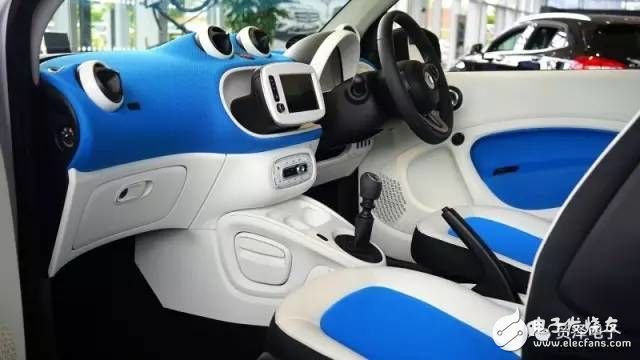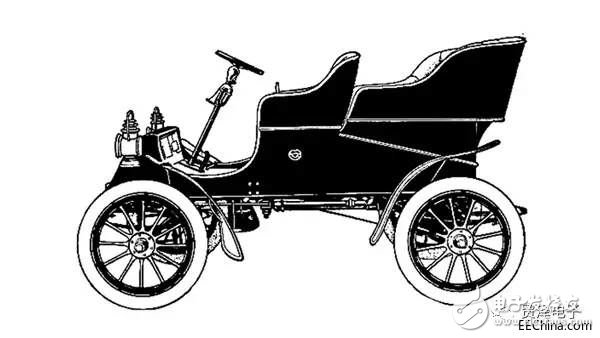According to a Harvard study, Americans spend an average of 101 minutes a day driving a car. If measured by the time of a lifetime, there are 37,935 hours for driving, and the result is amazing. But what's frustrating is that the fuel bills that most Americans spend may catch up with the car itself.
The emergence of fully automated vehicles is bound to affect the results of statistical data. Imagine the additional 4.3 years of productivity added to a fully-automated car, and you will regain all the good times in your life. You can also make an extra one or two weeks for your vacation.
In addition to economic and practical considerations, the new era of fully automated vehicles is leading us forward. With the advent of 3D printing technology, our pace has taken another big step forward, and the customization it brings is undoubtedly another big surprise in the industry.
People always like personalized things. We spare no effort to showcase our unique style, taste and purchasing power. We hire architects to design the house in the way we like. We decorate our cubicle at work. We customize sneakers online. In our lifetime, we spent thousands of hours on our chariots. Shouldn’t we do something? Isn't our chariot worth a personalized customization? Shouldn't we go into the car store, find a favorite designer, talk about our expectations of the car, and watch him put these expectations into a computer design (CAD) program, followed by a huge 3D printer Can we create what we want on the spot?

Figure 1: Can future cars be customized? Some designers are convinced of this.
3 D print shops and designers believe that we can customize the car at some point. In fact, Local Motors, the partner of Mouser's “Essence of Autonomy Challenge†project, has been driving innovation in 3D automotive printing, facing challenges and will further Development automation. This is no small effort. Typically, a modern car has about 20,000 individual components that are carefully assembled and each component has a function (and others are responsible for supervision and repair).
Different automotive parts are made of different materials and vary in shape and thickness, not to mention the difference in complexity. There are also computers and electronic systems, engines, batteries, and so on. Therefore, it is impossible to print the car simply by pressing the button. In fact, the traditional assembly line can make a hundred cars at a time, and even today's most advanced 3D printers can only print one car in a short period of time. So, 3D car printing is a great dream.
Many experts claim that in the next 100 years, due to the lack of existing infrastructure, design requirements and federal security regulations, it is almost impossible to implement automotive individual design on a large scale, but there are also many seemingly challenging ones. Assumption. Alder Riley has been in the automotive industry for nearly 10 years. He said: "If you only expect an ordinary mechanical car, everything can be printed in 2016. But if you expect modern facilities such as air conditioners and power windows. The car, and Tesla CEO Elon Musk can control your car from his mountain view office, which will not be possible until 2025."
Self-remodeling of carsIt is worth noting that the value of the automotive industry can reach 9 trillion US dollars, and the automotive industry has undergone many reforms. Consumers are the key to determining the rise and fall of the industry. And consumers need to customize.
"Henry Ford lost market share when the auto industry first started because he didn't think it was necessary to customize." Mark Perry, an inventor, designer and engineer at a New York company, said: "People only like black. But In the end, GM proved to Ford that users have color requirements."

Figure 2: Since the Ford T-car era, car design and user choice have come a long way – not just the choice of color.
Despite this, Perry admits that too many choices or open choices can only be confusing, and it is impossible to make large-scale customizations to serve niche like car manufacturing. This is because people do not need to produce large amounts of inventory to reduce production costs.
3D printing manufacturer John Kavala agrees. "This is a matter of scale," he said. "You still need a very large 3D printer to print the bumper." However, with the development of exponential rate technology, this prediction is not incredible, and even the development speed exceeds people's expectations.
For example, we can start with the car body and then add it. In theory, manufacturers can develop a controllable CAD system in which the user can add the chassis of the car, but not from it. The software can even perform virtual wind tunnel performance tests to determine how increasing the body will affect performance and automatically ensure that bonnets, doors, gas tank doors, windows, etc. are still available, as well as windshield wipers, side mirrors, sunroofs, etc. Can also be considered.
Other experts believe that it may make more sense to reduce production under specific safety guidelines, as the reduction of cars from 5,000 pounds to 1,500 pounds in lighter weight 3D printed materials creates some important safety issues that have not yet been addressed. Get a comprehensive solution. Kavala said: "The automotive industry is subject to safety regulation. If consumers are given the ability to change their car design, they will have to bear the corresponding risks."
Materials are another aspect of 3D printing that brings changes to automotive design and production. The aerospace industry, like the automotive industry that requires long-term, reliable components, has begun to change. Kavala pointed out that many companies have already innovated on 3D printers due to lower unit production in the aerospace industry. “The aerospace industry places great emphasis on the advantages of 3D printing, especially when designing lighter weight products.†He points out that airlines produce only a few dozen new aircraft per year, while the automotive industry needs to produce hundreds of thousands of vehicles.
“In the past year or two, people's main focus has been on new materials and automotive printing processes. Everyone realizes that many of today's materials can be optimized and play more.†Another is engaged in additive Adam Clark, consultant for manufacturing and engineering services, said.
“From a functional point of view, the material is only metal and carbon fiber. But everyone knows that one day someone will print the car body from the batter,†Riley said. He also pointed out that aluminum alloy frames may become more common due to weight and strength advantages. Few car models are now made of aluminum because they are difficult to use in current technology. At the same time, Clarke pointed out that several major OEMs have indicated that they want to use 3D printed parts regularly for two to three years, but he also acknowledges that regardless of whether the manufacturer is willing to give up the design of the average buyer user, Another thing. He said: "What I can see is the manufacturer approved design."
Breaking the rules of car designWhile some may feel that the above limits the creativity of 3D printing personalization, this is not a bad thing. After all, as many design experts have said, few customers really understand what they really want, and many don't design safe and functional things for themselves. "Design work should be left to the designer."
Perry said: "Despite the maturity of technology, people will not expect more choices in the end, they just want their choice."
The production generation has of course been exposed to 3D technology very early, but this does not mean that the expectations for road safety and car quality are ingrained. "In the future, many design rules will be broken, but I believe that the analysis tools will be very powerful enough to automatically build a structure to withstand the applicable conditions," Clark said. He pointed out that the overall shape and "feel" of the design will meet people's expectations. However, once the machine is advanced enough, and once the manufacturing guidelines are in place, the car manufacturer can adjust the software to print a sports car and a minivan on the same machine. Moreover, in the current automotive software market, custom accessories already have a huge market. As 3D printing improves, you'll be able to complete thousands of "custom" parts more efficiently.
So, will car repairs become cheaper? If the fully automated car is as advertised, we certainly don't need too much car repair, but the answer to this question is "maybe." Even today, we can find a car dealer to change the headlights and find that the entire body can be 3D printed on site, thus reducing the space for storing parts in the warehouse, because 3D printing can eliminate the cost of inventory purchase and storage space. . Aftermarket parts suppliers will be able to produce parts on demand. Traditional car manufacturers are also realizing the advantages of 3D printing, initially to replace tools made from expensive and resource-poor metal materials.
So, what about the future of vehicle procurement? Can we simply drag and drop the virtual reality helmet and slides onto a custom frame until we are satisfied with the final result? This is very possible. It will also make cars on demand, rather than tens of thousands of production and then wait for sale. In fact, this is exactly what Tesla did. Allow customers to make a down payment before starting the manufacturing process. This will be more sustainable, greener and more cost effective.
The automotive industry may also be inspired by companies that manufacture prosthetics, most of which are manufactured in 3D printing. Of course, while the underlying mechanisms are standardized, many companies are trying to provide personalized prosthetic experiences to their customers. Riley said: "The rich always find ways to spend money, so I am sure this will be a good thing."
T Copper Tube Terminals,Non-Insulated Pin-Shaped Naked Terminal,Copper Cable Lugs Terminals,Insulated Fork Cable Spade Terminal
Taixing Longyi Terminals Co.,Ltd. , https://www.lycopperlugs.com